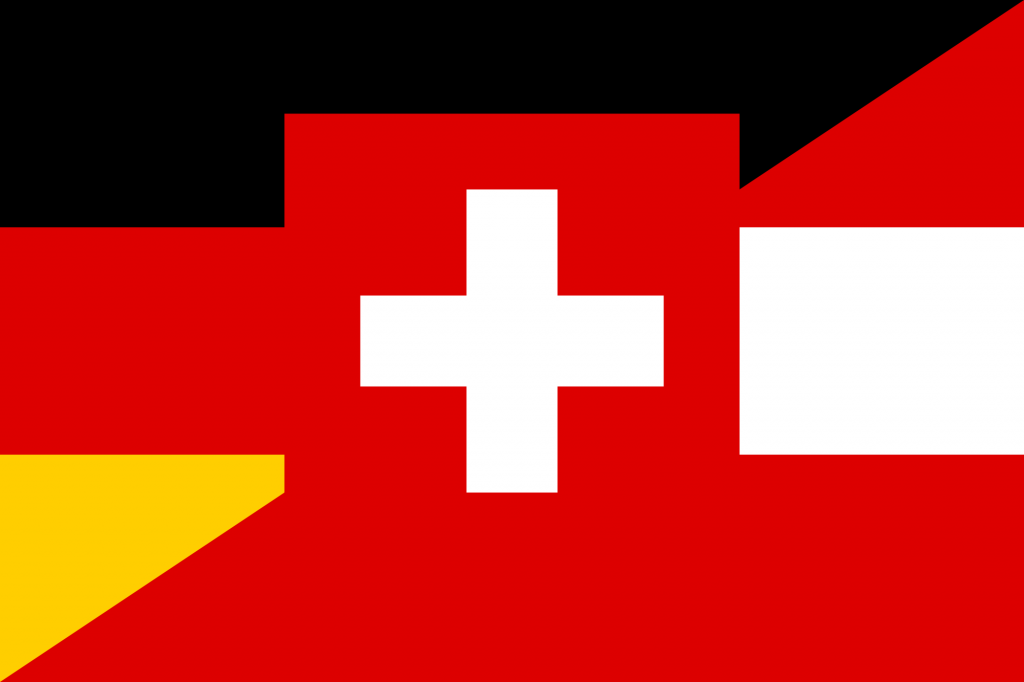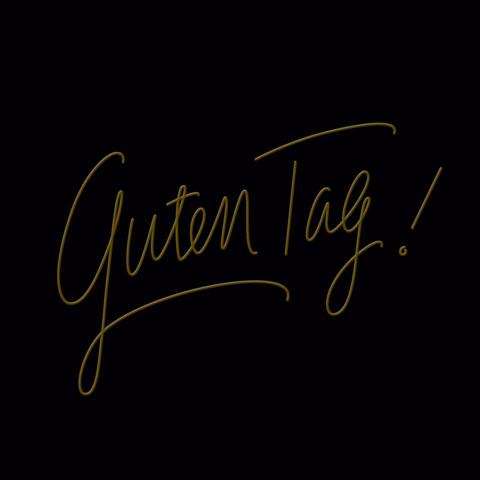Explaining “High German” and the Many Other German Variants
Sometimes us native English speakers forget that the variety we see in our own language is to be found in other languages as well. That is to say, for every American correcting a Brit on spelling, for example, there is a Brit looking down on what some see as the simplification of English by Americans, Australians, and everyone in between; the same is true elsewhere!
With that in mind, let's take a look at a sample of the variants of German; an Indo-European pluricentric language, with around 77 million L1 and 53 million L2 speakers worldwide.
GIF via Giphy
Comes as standard
If you learned German in school or are currently taking classes, chances are the version of German you're learning is the standard one — Standarddeutsch or Hochdeutsch — High German. That is not to say all the other variants and dialects of German are somehow less, of course, though there are those who do view this language divide like that.
Hochdeutsch will, theoretically, get you understood in just about every German-speaking place you may find yourself, so there's no need to worry if what you're learning is right or not. High German should not even be considered as the prestigious or correct form of the language at all; it actually is geographical marker from where in the country the variant of German predominantly resides.
Niederdeutsch (Low German/Plattdüütsch)
Low in this sense is also geographical, with most speakers of Plattdüütsch to be found in the lowlands of northern Germany — and it's also named this because the land in this region is low, or flat; the word comes from the German for flatten or press. Plattdüütsch is a dialect, but many speakers consider it a unique language in its own right.
Learning a new language? Check out our free placement test to see how your level measures up!
Pennsilfaanisch Deitsch (Pennsylvania “Dutch”)
This is a variant of German found in North America, descended from Amish and Mennonite settlers during the 17th and 18th centuries. It has similarities to the Pfälzisch dialect of the Palatinate region of Germany, though differs from most other forms of German by code switching with English, or heavy reliance on English loan words.
This influence of the surrounding language in an area is also seen in Brazilian German, where pronunciation and vocabulary from Portuguese dialects becomes prominent.
Friesisch (Frisian)
Frisian is mostly spoken in the north of Germany, along the North Sea coast. Frisian is further divided into Saterland, West, and North Frisian, but for simplification, approximately 480,000 people speak a variant of Frisian, the majority of which are to be found in The Netherlands. It can be argued that Frisian is one of the smallest dialects of German.
Bayerisch (The Bavarian Dialect)
This variant of German is predominantly spoken in southeastern Germany, though you'll also hear it in parts of Austria, Bavaria, Tyrol, and Saxony. The largest Bavarian cities are Vienna and Munich, so when travelling around this part of Europe this variation in German is something to keep in mind — though standard German is most typically spoken by all in the larger cities as well as this Bavarian dialect.
Alemannisch (Alemannic)
This variant of German is mostly spoken along the Rhine in Switzerland, and has become an important standard language for the country. It is an Upper German dialect — which again, is nothing to do with status, and more to do with its positioning on the branches of the language family tree.
Schwiizerdütsch (Swiss German)
Swiss German is said to be one of the hardest forms of German to understand — even for those who speak German. Swiss German has entirely unique pronunciation and grammar, as well as vastly different vocabulary to standard German. Standard German is obviously spoken by the Swiss as well in places, though it is viewed more as a foreign language rather than a variant of their own.

Photo via Wikimedia
Österreichisches Deutsch (Austrian German)
Austrian German is about as close as it's possible to get to standard German, with newspapers in Austria using German that looks essentially the same as any of the big names you'd find in Germany itself.

GIF via Giphy
Sächsisch (The Upper Saxon Dialect)
Not that we approve of name-calling, but this form of German is said to be the ugliest variant. It is found in the eastern part of Germany, and the dialect provokes strong opinions when debated, possibly due to its links with the German Democratic Republic during the Cold War.
Berlinerisch (The Berlin Dialect )
The Berlin dialect is known for changing the pronunciation of ch to k and g to j, and though it's thought of as its own unique dialect by those who speak it, linguistically speaking it isn't at all! The Berlin dialect is spoken predominantly in Berlin and the surrounding metropolitan area, originating from a Brandenburgische variant. Some believe that this variant of German is dying out due to standard German holding the monopoly on media influence.
This by no means explains all the beautiful variants of German you are likely to find, but it does, we hope, prove the point that it's not only English that comes in all shapes and forms. And we hope we've piqued your interest at least a little when it comes to the beautiful diversity of the language that is German!



